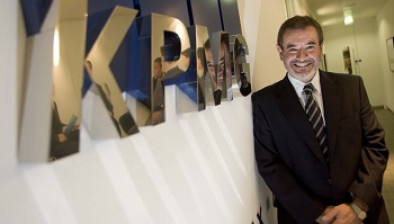SRC-KPMG: Scottish retail sales decreased by 13.8% compared to March 2019
Total sales in Scotland decreased by 13.8% on a 2-year basis compared with March 2019, according to the latest Scottish Retail Consortium (SRC) & KPMG Scottish Retail Sales Monitor.

The figure was below the 3m average decline of 20.9% and the 2019 average decline of 0.2%.
The monitor found that Scottish sales decreased by 11.5% on a 2-year like-for-like basis compared with March 2019, when they had decreased by 0.2%. This is above the 3-month average decrease of 20.3% and below the 2019 average decrease of 0.8%.
Total Food sales increased 19.7% on a 2-year basis versus March 2019, when they had decreased by 0.2%. March was above the 3-month growth of 12.8% and the 2019 average growth of 2.4%. The 3-month average was above the UK level of 11.6%.
Total Non-Food sales decreased by 49.2% in March on a 2-year basis compared to March 2019, when they had increased by 0.7%. This was above the 3-month average decline of 49.2% and the 2019 average decline of 2.4%.
Adjusted for the estimated effect of Online sales, Total Non-Food sales decreased by 10.5% in March versus March 2019, when they had increased by 1.3%. This is above the 3-month average decline of 20.0% and below the 2019 average decline of 1.4%. This was lower than the UK’s 3m average decline of 4.7.
Now that we have begun to annualise against the beginning of the coronavirus crisis period in March 2020, analysing year on year figures has proved challenging, as the comparable conditions from last year are not a representative basis point. Therefore, the headline rates in this report are calculated comparing this month’s performance against the same month from 2019.
On a Total 2-year basis retail sales took a big step in the right direction in March, with -13.8% an improvement from the -23.7% seen in February. However, sales remained in significant decline due to the ongoing closure all non-essential stores.
While Food sales for the month were below the levels seen during the stockpiling episode seen last March, they were still above the more normal levels seen in 2019, due to the lack of competition from pubs and restaurants that remained closed. The Non-Food side recovered significantly, but remained some way behind normal spending levels, which was a natural result of the store closures that are due to open after those south of the border.
Paul Martin, partner, KPMG’s head of retail, said: “March 2020 was a month that we’re unlikely to ever experience again, with panic buying followed by store closures and a collapse in sales. With that in mind, our comparison on a two-yearly basis provides us with more of an accurate idea of how well Scotland’s High Street is performing.
“With total sales down almost 14%, it’s clear that there is a long and potentially very challenging road ahead. However, it’s reassuring to note that this is a significant improvement from the 23.7% decline in February. The next few months will be make-or-break for many retailers as restrictions ease and consumer confidence hopefully returns.
“Non-food sales have really struggled throughout the pandemic, with UK retailers in that space taking a staggering £27 billion hit. The sector has witnessed a combination of devastating factors many accelerated by the pandemic, leading to frequent changes in regulations and costly new rules on creating ‘Covid-secure’ retail spaces, and a gradual transformation in consumer attitudes to shopping, with online now completely dominant. There may be light at the end of the tunnel, but any recovery and potential post-pandemic boom period could be too little too late for some.”
Ewan MacDonald Russell, head of policy & external affairs at the SRC, added: “The decline in retail sales in March was much less steep compared to recent months, albeit still fell by nearly 14 per cent compared with the truer comparable trading period in 2019. It’s hardly surprising sales were down with most shops shut for the crucial run up to Easter, but there were some encouraging signs that shoppers are preparing to resume shopping when the lockdowns finally end.
“Food sales were very high in March, but that’s in part due to Easter spending falling in the comparable April in 2019. The continued shuttering of eateries last month also flattered the figures. Nonetheless, despite households being unable to meet, it appears consumers continue to splash out on the usual domestic Easter meal, with Easter eggs selling very strongly. Non-food sales continue to be weak, but strong online sales of children’s clothes in response to schools reopening indicate there may be better news ahead when people can leave their homes for non-essential reasons.”
He concluded: “As we move further into the year the two big questions will be whether retail sales bounce back due to pent up demand with the end of lockdown, and where that uplift in retail sales is sustained rather than merely temporary.
“So far this year the majority of non-food sales have taken place online – if that doesn’t change and people don’t return to the shops it will pose very significant questions for the future of physical retail stores, and in turn for the state of our retail destinations, local communities and tax revenues from business rates. That’s something politicians of all parties will have to grapple with once the current election is over.”










